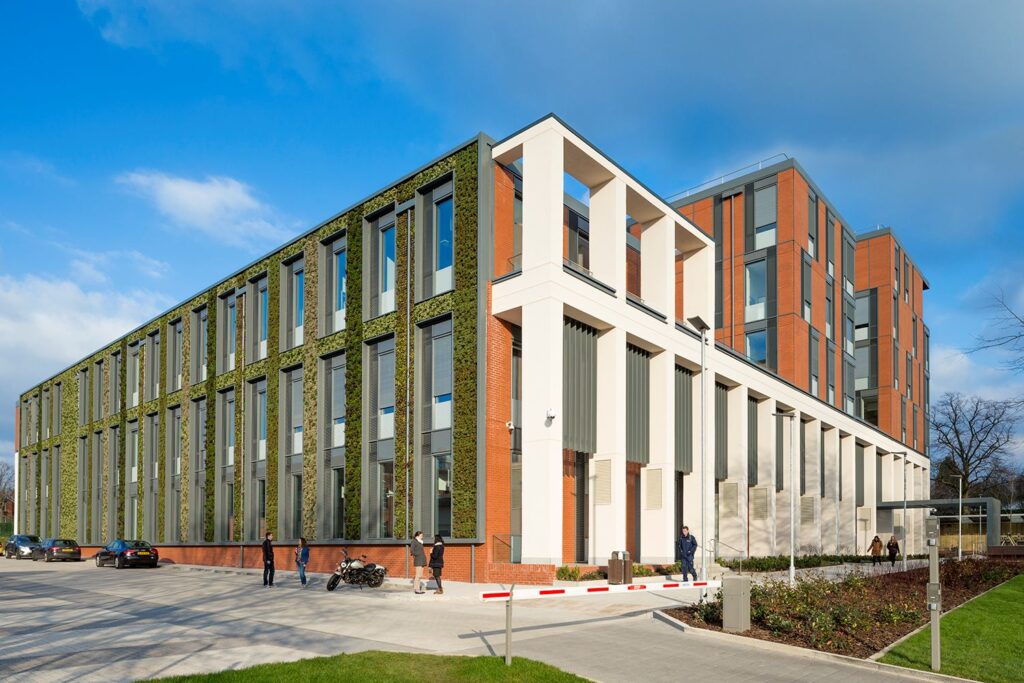What’s it like to spend your working life assessing BREEAM projects?
We asked our lead consultant Alison Ewins about life inside and outside of the BREEAM world, and how we can all make those assessments run a little more smoothly…
BE: Hi Alison, can you tell us a bit about your job?
AE: I’m a BREEAM assessor and AP (Advisory Professional). So I help clients to achieve their ratings. I’m responsible for managing the assessment process and validating a project’s compliance against the BREEAM criteria. It’s my job to collate the evidence from the design team and make sure information we send to BRE (who provide the final certificate) shows how credits have been achieved.
I’ll attend meetings throughout the project to make sure the team is on track for achieving the rating they need, and I’ll go to site at the end of the project to take photos and collect evidence for the final assessment.

BE: How long have you been a BREEAM Assessor?
AE: I took my first BREEAM training course in 2007, so I’ve been an assessor for 14 years. My first couple of assessments were using the 2006 version. Since then I’ve certified over 75 projects including schools, university buildings, offices, hospitals and industrial warehouses, under BREEAM New Construction, Refurbishment and Fit Out and Code for Sustainable Homes.
BE: That’s a lot of projects! What sort of clients have you worked with over the years?
AE: I’ve worked with lots of the main contractors like Willmott Dixon, Wates, Morgan Sindall and Kier. I’ve also worked directly for the NHS and a few universities including University of Leicester and Nottingham Trent University.
I worked with University of Leicester and Willmott Dixon to achieve BREEAM Excellent on their Centre for Medicine which is the UK’s largest Passivhaus building. Through working with NTU I’ve also ended up giving lectures to the architectural technologist students about BREEAM as part of their course.
BE: What’s the best bit about being a BREEAM consultant?
AE: I feel like I’m doing my bit for the planet by guiding design teams to create more sustainable buildings.
BE: And the worst thing?
AE: I sometimes feel like the most unpopular person in the room! I still feel like a lot of people don’t take BREEAM seriously and it’s a bit of an afterthought, so it’s not considered as early as it should be, therefore making it much harder than it needs to be.
BE: How do you feel BREEAM can help us get towards a net zero carbon world?
AE: In a few different ways. Firstly BREEAM is usually updated at the same time as Part L to take into account the changes in the Building Regulations. Each update means that achieving credits for reduction in energy use and CO2 is harder. Credits are only awarded for going over and above the bare minimum Part L targets, so to achieve higher BREEAM ratings projects will generally need to show reductions over that Part L baseline. Also under the latest version of BREEAM new credits were added to evaluate operational energy. This attempts to address the performance gap between predicted and actual energy performance.
Secondly the UKGBC’s (UK Green Building Council) Net Zero Carbon A Framework Definition outlines five steps to achieve a Net Zero Carbon Building. Step 2 is to reduce construction impacts by measuring embodied carbon and offsetting at Practical Completion. In tune with this, BREEAM 2018 introduced credits for measuring the embodied carbon using Life Cycle Assessment (LCA). This includes measuring the embodied carbon in alternative construction types allowing the design teams to use these comparisons to make carbon reductions in the build process. Approximately 10% of the credits under 2018 BREEAM are awarded based on LCA, so the scheme has recognised the importance this has on the route to Net Zero Carbon.
BE: Have you got any advice for a BREEAM first timer?

Centre for Medicine, Leicester University
AE: Start early! Approximately 30% of the credits need actioning at or around Concept Design, and without these, BREEAM can be hard work and expensive. The higher ratings will be impossible without the early credits.
Also, its crucial that you tell your BREEAM assessor if you make any changes to the design. They can then tell you if it’s going to affect the BREEAM score. I’ve worked on several projects where the design team have made changes and it’s led to significant issues. One project ended up having to add £30k worth of PV onto the roof to achieve BREEAM Excellent as they’d made changes that affected the energy performance – if they’d run it by me at the time, we could have found another solution.
BE: What else do you do outside of your assessment and consultancy work?
AE: I’ve been carrying out Life Cycle Assessments (LCA) since BREEAM introduced this as a major part of the assessment in 2018. I’ve given a number of CPD sessions to contractors, architects and university students; mainly on BREEAM but also Code for Sustainable Homes.
BE: What do you get up to outside of BE?
AE: Climbing, cycling, aerobics, walking, baking and eating cake. A day without exercise is a wasted day!
BE: Thanks for your time Alison!
Can we help with your BREEAM project?
Call us on 0330 055 34 05 or email be@buildenergy.co.uk.
